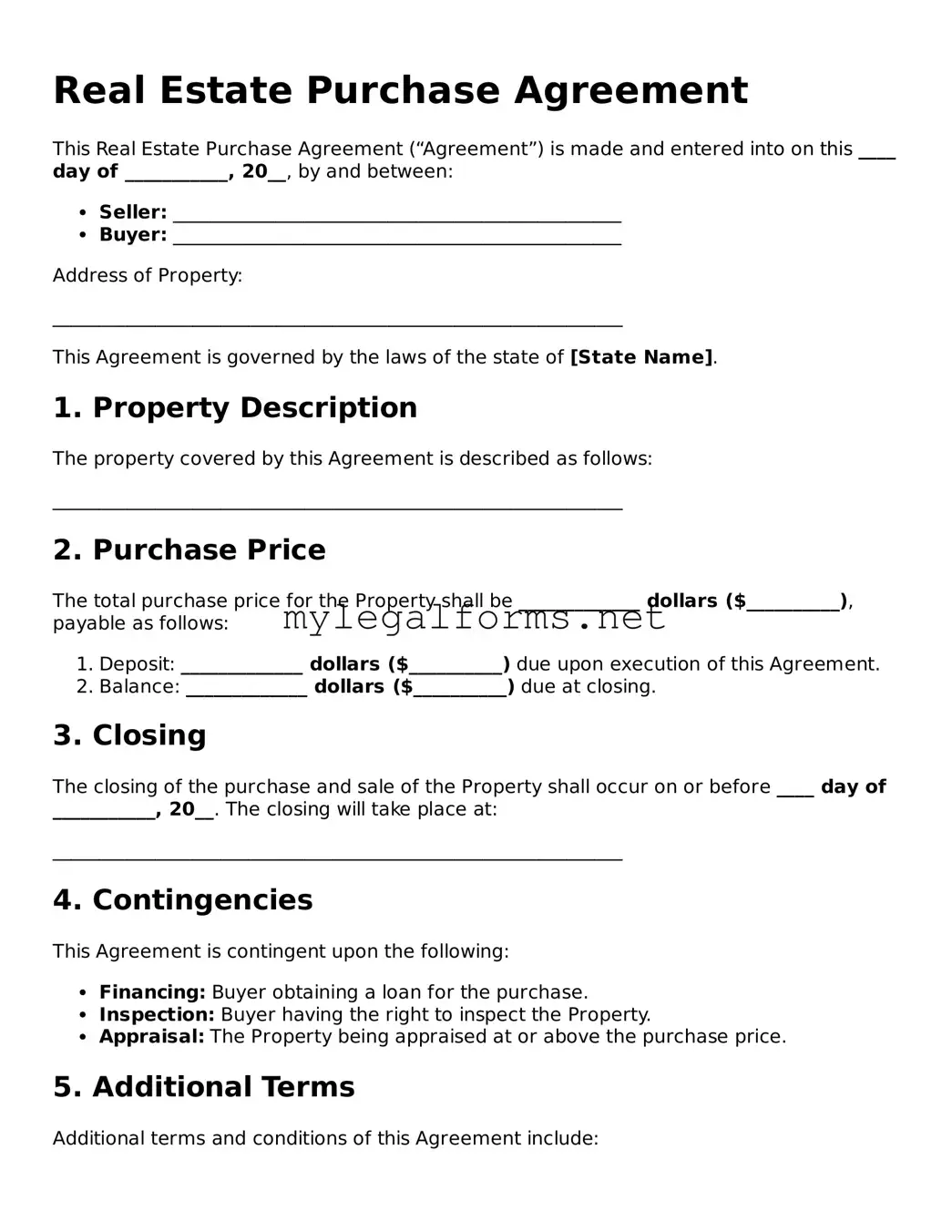Real Estate Purchase Agreement
This Real Estate Purchase Agreement (“Agreement”) is made and entered into on this ____ day of ___________, 20__, by and between:
- Seller: ________________________________________________
- Buyer: ________________________________________________
Address of Property:
_____________________________________________________________
This Agreement is governed by the laws of the state of [State Name].
1. Property Description
The property covered by this Agreement is described as follows:
_____________________________________________________________
2. Purchase Price
The total purchase price for the Property shall be _____________ dollars ($__________), payable as follows:
- Deposit: _____________ dollars ($__________) due upon execution of this Agreement.
- Balance: _____________ dollars ($__________) due at closing.
3. Closing
The closing of the purchase and sale of the Property shall occur on or before ____ day of ___________, 20__. The closing will take place at:
_____________________________________________________________
4. Contingencies
This Agreement is contingent upon the following:
- Financing: Buyer obtaining a loan for the purchase.
- Inspection: Buyer having the right to inspect the Property.
- Appraisal: The Property being appraised at or above the purchase price.
5. Additional Terms
Additional terms and conditions of this Agreement include:
- _____________________________________________________________
- _____________________________________________________________
6. Signatures
The parties to this Agreement hereby agree to the above terms and conditions.
Seller's Signature: ______________________ Date: ____________
Buyer's Signature: ______________________ Date: ____________
